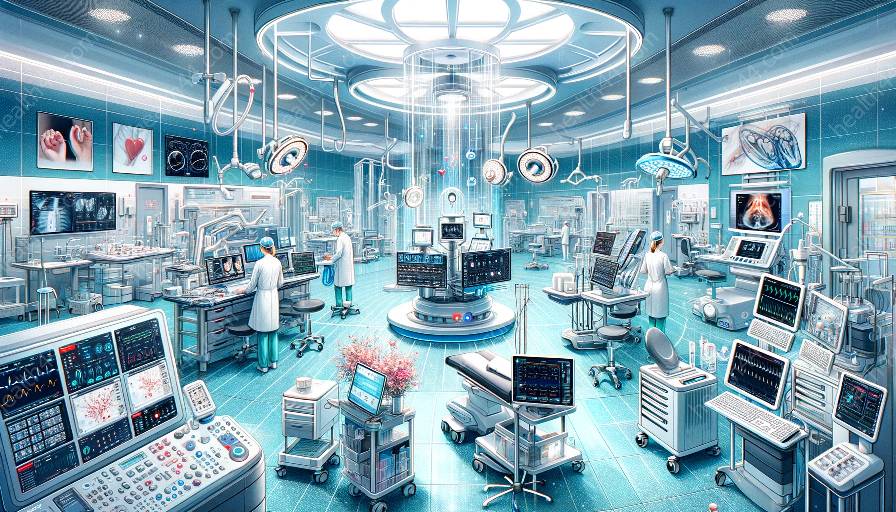Biofeedback is a therapeutic technique that allows individuals to learn how to regulate physiological functions that are typically involuntary, such as heart rate, blood pressure, and muscle tension. It is based on the principles of biophysics and has numerous applications in healthcare, particularly in the field of medical devices.
Biophysical Mechanisms of Biofeedback
The biophysical mechanisms of biofeedback are rooted in the concept of self-regulation of the human body. It involves the use of electronic or electromechanical instruments to accurately measure, process, and provide information about physiological processes to individuals in real-time. This form of training helps individuals to gain awareness and control over their physiological functions through visual or auditory cues. The fundamental biophysical mechanisms underlying biofeedback involve the interaction between physiological signals from the body and the feedback provided by the biofeedback device.
One of the key biophysical mechanisms of biofeedback is the principle of operant conditioning, where individuals are trained to modify their physiological functions through reinforcement. By receiving immediate feedback on their physiological responses, individuals can learn to consciously influence these functions. For example, a person undergoing biofeedback to reduce muscle tension can observe real-time feedback on their muscle activity and consciously adjust their behavior to lower the tension levels.
Another biophysical mechanism involves the concept of entrainment, where the body's physiological rhythms and patterns can be synchronized or modulated through external stimuli. Biofeedback devices can help individuals entrain their physiological functions to specific patterns or frequencies, leading to improved regulation and coordination of these functions.
Applications in Healthcare
Biofeedback has a wide range of applications in healthcare, particularly in the management of various medical conditions and the enhancement of overall well-being. The use of biofeedback is not only limited to clinical settings, but also extends to home-based monitoring and self-regulation practices, supported by advanced medical devices.
Chronic Pain Management
One of the prominent applications of biofeedback in healthcare is in the management of chronic pain conditions. By providing individuals with real-time feedback on their physiological responses, biofeedback techniques can be used to help individuals modulate their pain perception and improve their ability to cope with pain. This can be achieved through various modalities, such as electromyography (EMG) biofeedback for muscle relaxation and thermal biofeedback for temperature regulation.
Stress Management
Biofeedback plays a crucial role in stress management by enabling individuals to monitor and regulate their physiological stress responses. Through techniques such as heart rate variability (HRV) biofeedback, individuals can learn to enhance their resilience to stress and improve their overall well-being. The biofeedback approach to stress management is particularly relevant in today's fast-paced and demanding lifestyles.
Psychological Disorders
Biofeedback has also been utilized in the treatment of various psychological disorders, including anxiety, depression, and attention-deficit hyperactivity disorder (ADHD). By providing individuals with real-time information about their physiological states, biofeedback can assist in self-regulation and promote emotional and cognitive well-being.
Performance Enhancement
In sports and performance domains, biofeedback techniques have been used to enhance athletes' performance by optimizing their physiological functions, such as enhancing focus and reducing anxiety. By using biofeedback to train and monitor key physiological parameters, athletes can improve their overall performance and achieve better outcomes in their respective fields.
Relation to Biophysics and Medical Devices
The application of biofeedback in healthcare is intricately connected to biophysics, as it involves the study of the physical principles underlying biological processes and the development of advanced medical devices to facilitate biofeedback interventions. Biophysics provides the foundational understanding of how physiological signals are generated, transmitted, and modulated, which is essential for the design and functioning of biofeedback devices.
Medical devices play a pivotal role in the implementation of biofeedback techniques. These devices are equipped with sensors, signal processing units, and feedback mechanisms that enable the accurate measurement and delivery of physiological information to individuals. Advancements in medical device technology, including wearable biofeedback devices and portable monitoring systems, have expanded the accessibility and applicability of biofeedback interventions across various healthcare settings.
In summary, the biophysical mechanisms of biofeedback, coupled with its wide-ranging applications in healthcare, showcase the intricate interplay between biophysics and medical devices. By harnessing the principles of biophysics and leveraging cutting-edge medical technologies, biofeedback continues to contribute significantly to the improvement of health outcomes and the overall well-being of individuals.


